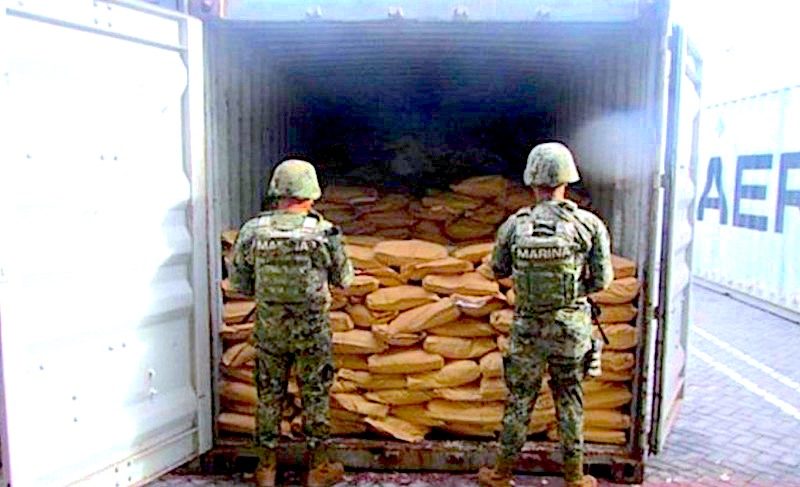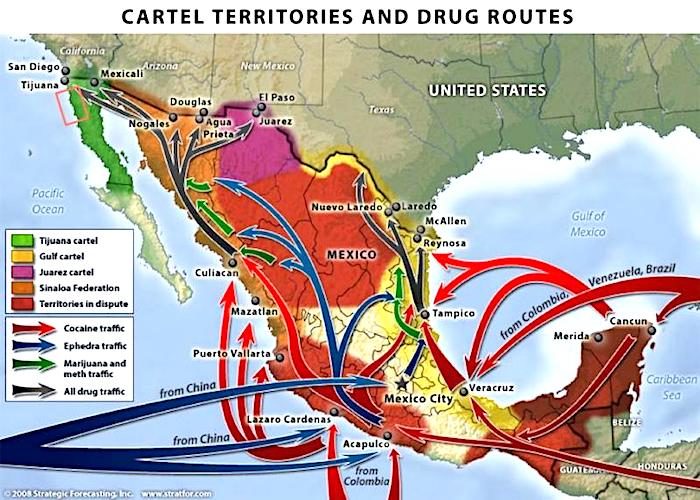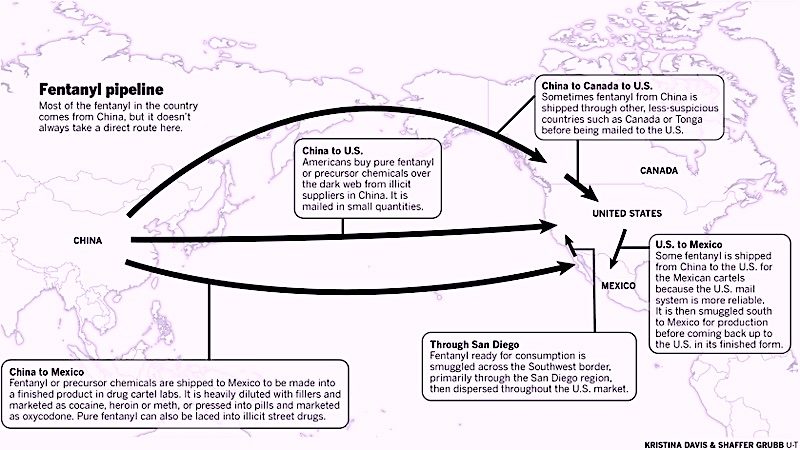
The Secretariat of the Navy said joint work between the Naval Unit of Port Protection No.63 and the Tenth Naval Zone and Customs at the port uncovered the illicit drug in a 40ft shipping container. Preliminary reports show the container wasn't entirely filled with fentanyl.
The vessel was a several hundred-meter container ship flying a Danish flag, in which according to its freight manifest, the fentanyl was identified as "Calcium Chloride."
Navy and port officials completed a random search of the unnamed vessel, and when they carried out specialized Customs laboratory testing of some of "Calcium Chloride," it turned out to be fentanyl.
Within one container, there were 931 sacks of fentanyl, totaled a gross weight of 23,368 kilograms (51,517 pounds). The container ship came from Shanghai, on China's central coast, and was eventually going to drop off the cargo in Culiacán, the capital of the state of Sinaloa. Tabasco Hoy reported:
"It is important to highlight that, with these actions, the Secretary of the Navy, as the National Maritime Authority, endorses the commitment to work in coordination with the three government orders, to combat organized crime with the resources provided by the Law, always in strict adherence to Human Rights."The report made no mention about the intended destination of the illicit drug after Culiacán port, but it was likely it was headed for the US.
It's starting to become increasingly clear how the global supply chain of fentanyl starts with manufacturers in China, then shipped on container vessels to Mexico. The next step would be using Mexican cartels for the so-called "last mile" delivery to the US.
Flowing in one direction, the fentanyl pipeline starts in the Sinaloa state, through Sonora, into Baja California, where Mexican cartels, likely the Sinaloa Cartel, use well-established drug trafficking routes into the US. More than 80% of the drug is driven through the San Diego border before dispersed throughout the US.
By the time Mexican drug cartels get the fentanyl onto American streets, it would be cut with any number of substances, from cocaine to heroin to methamphetamine to sugar to acetaminophen.
There was also no mention in the report if the seizure was the largest in Mexican history nor how many millions of Americans it could've killed, but judging by the preliminary numbers - this latest seizure could be a record-setter.





Reader Comments